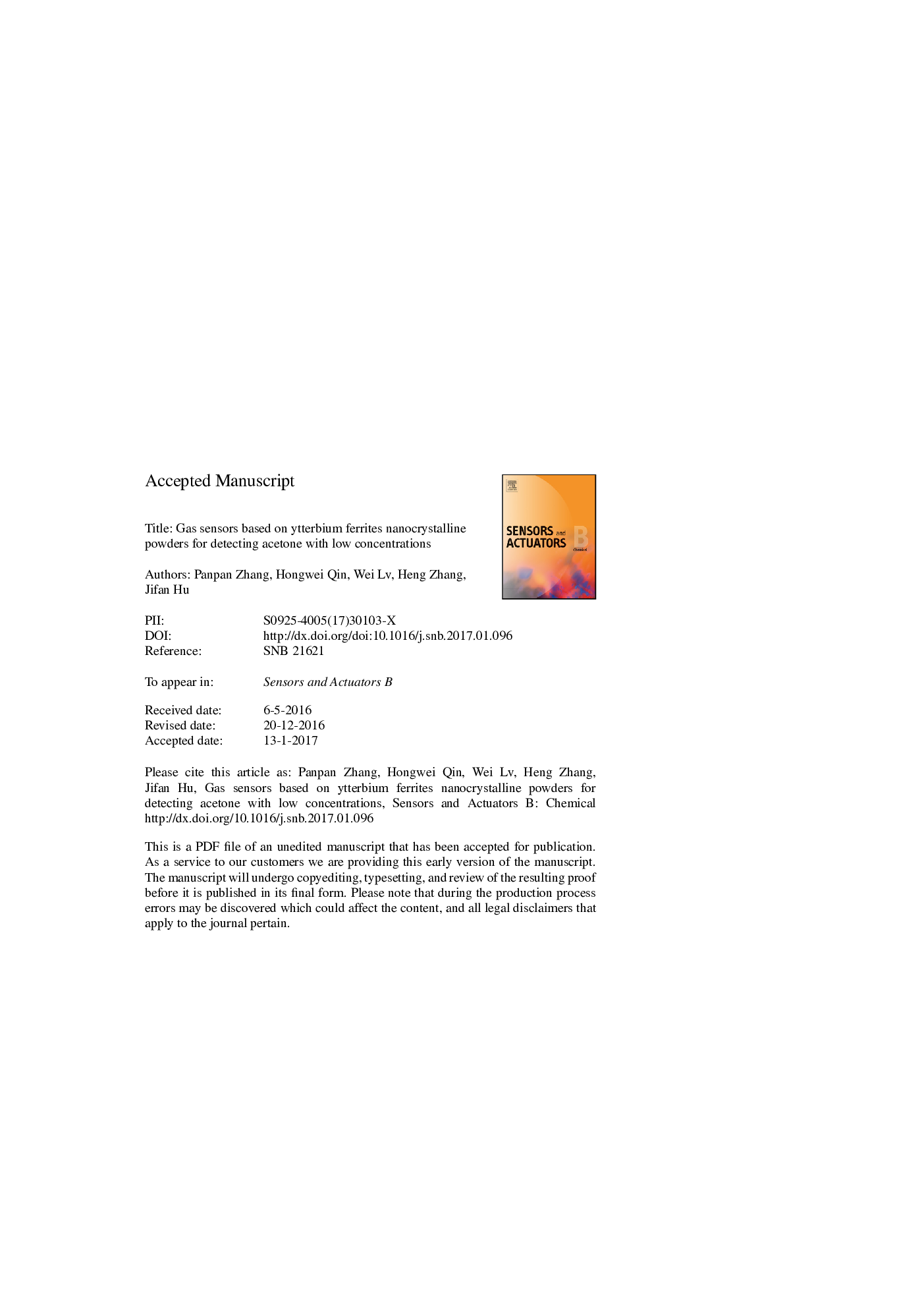| Article ID | Journal | Published Year | Pages | File Type |
|---|---|---|---|---|
| 5009753 | Sensors and Actuators B: Chemical | 2017 | 52 Pages |
Abstract
The ytterbium ferrites nanocrystalline powders were prepared by sol-gel method, followed by the subsequent annealing, which exhibit considerable response to acetone gas. The ytterbium ferrite crystallizes as mixed phases of YbFeO3-Yb2Fe3O7 when annealed at 700 °C and 800 °C, but as single phase YbFeO3 annealed at 900 °C, respectively. When exposed to acetone gas, the resistance increases for p-type YbFeO3 but decreases for mixed phases of YbFeO3-Yb2Fe3O7. The sensing properties for YbFeO3-Yb2Fe3O7 may be mainly associated with the charge order (CO) state of Yb2Fe3O7. The maximum sensitivities to 1 and 3 ppm acetone gas in the background of air (with the room temperature humidity 33% RH) for sensor based on YbFeO3- Yb2Fe3O7 (with TA = 800 °C) are about 1.21 and 1.42 respectively at optimal operating temperature of 250 °C. The appropriate replacement of Yb by Ca (about 20 at.%) in YbFeO3 annealed at 900 °C not only decreases the resistance but also enhances the sensing response greatly. With increase of room temperature humidity, the sensing response of Yb0.8Ca0.2FeO3 sensor increases. The response for Yb0.8Ca0.2FeO3 in the background of air (with the room temperature humidity 90% RH) at its optimal temperature of 230 °C is 2.1, 3.9, 4.3, 9.5 and 15.0-0.1, 0.3, 0.5, 1 and 3 ppm acetone gas, respectively. Yb0.8Ca0.2FeO3 sensor may be a promising candidate for developing a breath analysis technique for monitoring diabetes. The sensing mechanisms of ytterbium ferrites to acetone are also discussed.
Keywords
Related Topics
Physical Sciences and Engineering
Chemistry
Analytical Chemistry
Authors
Panpan Zhang, Hongwei Qin, Wei Lv, Heng Zhang, Jifan Hu,
